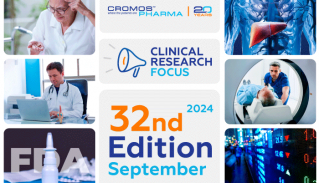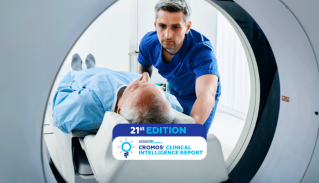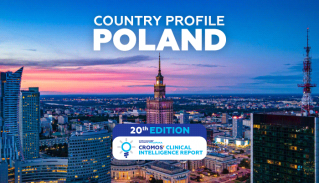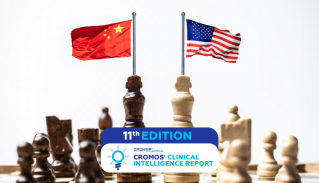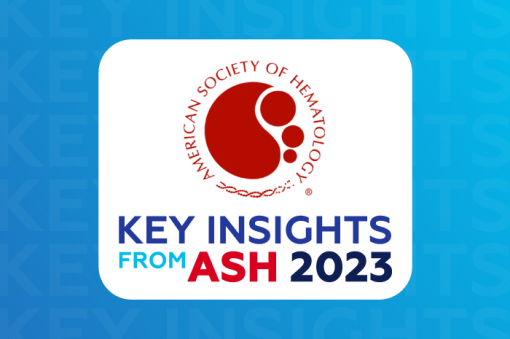
Exploring Groundbreaking Advances: Key Insights from ASH 2023
The American Society of Hematology (ASH) 2023 conference, a cornerstone event in the field, has lived up to expectations by unveiling a multitude of groundbreaking developments. It has proven to be an extraordinary platform, revealing a plethora of discoveries and advancements poised to redefine the landscape of hematological research and patient care.
As the author navigates through the wealth of information presented at ASH 2023, it becomes imperative to recognize the sheer magnitude of innovative research, impactful clinical trials, and therapeutic breakthroughs that have surfaced. The remarkable volume of noteworthy developments is a testament to the collective dedication and innovation within the hematology community. Therefore, in this exploration, only a carefully curated selection of highlights will be examined. Each of these highlights has been chosen for its significance and potential to bring about transformative changes in the comprehension and treatment of various hematological conditions.
Multiple Myeloma
In the dynamic landscape of Multiple Myeloma discussed at the ASH conference, Johnson & Johnson and Legend Biotech’s Carvykti (ciltacabtagene autoleucel) have undeniably set a gold standard for heavily pretreated patients. However, the soaring patient demand has created a unique scenario, where supply limitations and ongoing FDA investigation into reports of secondary T-cell malignancies associated with existing CAR-T products have opened doors for potential competitors, including emerging CAR-T therapies and a burgeoning pipeline of bispecifics poised to address the treatment gap.
The noteworthy phase 3 KarMMA-3 trial shed light on the substantial improvements observed in symptoms, functioning, overall health status, and health-related quality of life among patients with triple-class exposed relapsed/refractory multiple myeloma (RRMM) treated with idecabtagene vicleucel (ide-cel; Abcema). This promising data came from patients who had previously undergone 2 to 4 regimens, showcasing the potential of ide-cel as a significant player in the therapeutic landscape.
The ASH conference showcased a continued focus on BCMA-targeting within next-generation Multiple Myeloma programs. While novel targets remain limited, the current battleground appears to be shifting toward advancements in manufacturing processes, indicating a strategic shift within the industry.
The highly anticipated PERSEUS trial has captured the attention of experts, with its potential to establish a new standard of care for multiple myeloma through quadruplet therapy. Initial results suggest that combining daratumumab with bortezomib, lenalidomide, and dexamethasone (VRd) followed by maintenance therapy leads to higher rates of remission, depth of response, and a significant 58% improvement in progression-free survival (PFS) compared to VRd alone.
Additionally, the long-awaited findings of the IsKia study of the isatuximab quadruplet therapy have been revealed, offering insights into patients, including those with high-risk cytogenetic profiles. Notably, the Isa-KRd arm demonstrated deeper responses, as revealed by next-generation sequencing. Achieving MRD negativity at the 10-5 sensitivity threshold was notably higher in the Isa-KRd arm (77%) compared to the KRd arm (67%). A comprehensive examination at the 10-6 threshold showed even more significant differences, with 67% of patients in the Isa-KRd arm achieving MRD negativity compared to 48% in the KRd arm.
These findings collectively underscore the exciting developments and advancements in the Multiple Myeloma landscape, heralding a new era in treatment modalities and therapeutic strategies.
Leukemias and Lymphomas
The multinational phase 3 SYMPATICO trial compared the efficacy and safety of combining ibrutinib and venetoclax with ibrutinib and placebo in patients with relapsed or refractory mantle cell lymphoma (MCL). Ibrutinib, a Bruton tyrosine kinase (BTK) inhibitor, holds multiple approvals for treating MCL, especially in cases where patients have undergone more than one prior therapy. On the other hand, venetoclax, a BCL-2 inhibitor, is already approved in the U.S. for chronic lymphocytic leukemia (CLL), showcasing complementary modes of action between the two drugs.
The trial revealed that the combination of ibrutinib and venetoclax delivered a statistically significant improvement in progression-free survival (PFS), clinical remission, and time-to-next-treatment. The two drugs are now being considered as a potential new standard of care for relapsed or refractory MCL.
The efficacy of this combination extends to patients with CLL, as demonstrated by the phase 3 FLAIR trial. Here, the combination of ibrutinib and venetoclax exhibited superior results compared to the traditional FCR (fludarabine, cyclophosphamide, and rituximab) regimen. This innovative approach not only significantly improved PFS and overall survival but also employed minimal residual disease (MRD) to tailor treatment duration, showcasing a highly personalized therapeutic strategy. Patients who received ibrutinib and venetoclax achieved an impressive 97.2% PFS at three years.
The updated results from phase 3 ALPINE trial, the first direct comparison of two BTK inhibitors, in patients with relapsed or refractory CLL or SLL showed that at 36 months, the PFS rates were 65.8% with zanubrutinib and 54.3% with ibrutinib. ORR remained higher with zanubrutinib compared with ibrutinib (85.0% vs 74.8%, respectively).
Turning attention to the Quantum-First Trial, an insightful analysis assessed the impact of CR duration on OS and EFS and the kinetics of CR achievement over time after induction in patients with newly diagnosed FLT3-ITD+ acute myeloid leukemia (AML). Although CR rates were similar between arms (55% in both), median CR duration was longer with Quiz vs PBO (38.6 months, 95% CI 21.9-NE vs 12.4 months, respectively). This finding solidifies the status of quizartinib added to 7+3 as the standard of care for fit patients, following its FDA approval in June 2023. The update underscores the significance of achieving deeper and more sustained FLT3-ITD MRD-negative responses during upfront therapy as a crucial predictor of overall survival and treatment outcomes.
Sickle Cell Disease
The ASH conference celebrated the noteworthy FDA approvals for two groundbreaking sickle cell disease (SCD) agents, Lyfgenia (ovotibeglogene autotemcel) and Casgevy (exagamglogene autotemcel). Notably, Casgevy marked a historic milestone as the first FDA-approved therapy utilizing CRISPR/Cas9 gene-editing technology. The Phase 3 trial showcased the efficacy of ex-vivo editing with CRISPR-Cas9 technology targeting the erythroid-specific enhancer region of BCL11A. This intervention resulted in an impressive 96.7% of subjects with severe SCD being free of vaso-occlusive events, and all subjects achieved freedom from hospitalization.
While these advancements signify important progress in the clinical landscape of SCD, medical experts acknowledge that treatment logistics, manufacturing challenges, and lingering uncertainties about reimbursement and long-term safety will likely pose obstacles to immediate patient access. While these therapies could potentially become choices for patients rather than last resorts, this transformation may be five to ten years away, pending further safety validations.
As market access intricacies for Lyfgenia and Casgevy unfold, competitors are seizing opportunities to explore new disease-modifying agents in SCD through more familiar approaches. Additionally, promising late-breaker data showcased the potential of haploidentical bone marrow transplants, which could significantly expand the pool of potential bone marrow donors for SCD patients.
Hemophilia
A potentially transformative therapy emerged in the form of the pivotal Phase 3 BASIS trial of Marstacimab, a novel monoclonal antibody designed for patients with severe Hemophilia A and moderate to severe Hemophilia B. By neutralizing tissue factor pathway inhibitor and enhancing thrombin through the extrinsic coagulation pathway, this innovative approach demonstrated promising results in a single-arm study. Both on-demand and routine prophylaxis groups experienced a significant decrease in the annual bleeding rate. While this presents a groundbreaking shift in Hemophilia management, it also underscores the challenges associated with ensuring the continued attention to such complex therapies and addressing global accessibility issues.
Graft-Versus-Host Disease (GVHD)
Turning to an update on potential treatments for chronic GVHD new hope has been offered to patients undergoing hematopoietic cell transplantation. The randomized Phase 1/2 study of Axatilimab revealed a remarkable response rate of over 75% in subjects who had previously failed FDA-approved therapy. With a median failure-free survival of 17 months, this development represents a promising avenue for those grappling with debilitating chronic GVHD. Additionally, the exploration of the role of the microbiome in GVHD adds a novel dimension to clinical and translational research, shedding light on the influence of microbiota composition on alloreactive T cell responses in post-transplant patients.
MDS/Myelofibrosis
The ongoing TRANSFORM-1 trial showcased the success of combining the novel drug navitoclax with ruxolitinib in reducing spleen volume. The study’s primary outcome, a spleen volume reduction of 35% or more, demonstrated impressive results, with 64.2% of patients on the navitoclax regimen achieving this reduction by week 24, compared to only 31.5% in the placebo plus ruxolitinib group. Despite navitoclax not currently holding any approvals, its manufacturer, AbbVie, plans to submit the drug for FDA approval, pending study results.
Moreover, the COMMANDS trial presented a full analysis of a phase III trial evaluating the efficacy of luspatercept vs epoetin alfa in patients with transfusion-dependent lower-risk MDS (LR-MDS) who are erythropoiesis-stimulating agent naive. Luspatercept, a TGF-β ligand inhibitor, demonstrated superiority to epoetin alfa for LR-MDS, particularly in patients characterized by ringed sideroblasts. These results position luspatercept as a potential new frontline standard of care for LR-MDS, replacing erythropoiesis-stimulating agents. These exciting developments emphasize the dynamic landscape of hematology, promising transformative approaches and innovative solutions for various hematological conditions.
The world of hematology is evolving at an unprecedented pace, and the selected highlights represent just a fraction of the groundbreaking work unveiled at ASH 2023. These insights offer a glimpse into the broader tapestry of advancements that will undoubtedly shape the future of hematology.









